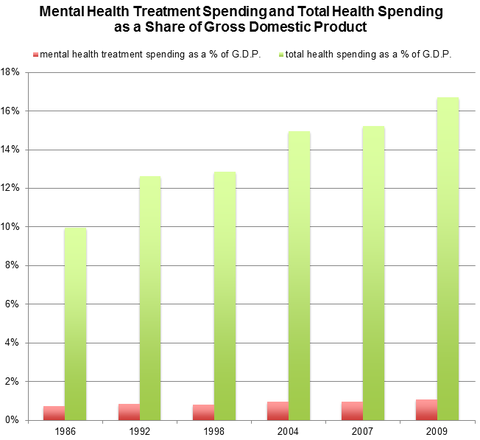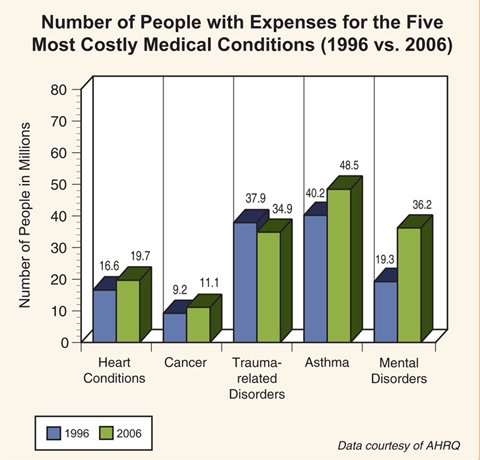But after much anticipation, the curtain will finally rise on the exchanges next week, providing millions of consumers with an online marketplace to compare health insurance plans and then buy the coverage on the spot.
The exchanges are likely to be most attractive to people who qualify for subsidized coverage. Individuals with low and moderate incomes may be eligible for a tax credit, which can be used right away, like a gift card, to reduce their monthly premiums. People with pre-existing conditions will no longer be denied coverage or charged more (this applies to most plans outside the exchanges, too). And all of the plans on the exchanges will be required to cover a list of essential services, from maternity care to mental health care.
“In today’s individual market, it’s like Swiss cheese coverage,” said Sarah Dash, a research fellow at the Health Policy Institute at Georgetown University. “Consumers should have an easier time figuring out what they are getting for their money.”
But it’s still going to take some time to analyze the plans and their costs, which are expected to vary widely across the states. And the coverage may still pinch many families’ budgets. Fortunately, there’s a six-month window, from now to March 31, for people to figure it all out.
Here’s some information to get you started:
Q. Where can I apply or get more information on the exchanges?
A. To avoid fraud artists, enter through the front door: Healthcare.gov. From there, you can find links to the exchange offered in your state. There may be technical glitches as the program gets started, so alternatively, you can call 1-800-318-2596.
Q
. When does coverage go into effect?
A. You can apply as early as Oct. 1, but coverage won’t begin until Jan. 1. The enrollment period for coverage in 2014 closes on March 31, 2014. After that, you can enroll only if you have a major life event like a job loss, birth, marriage or divorce.
Q. What sort of coverage will be offered?
A. All plans will have to provide the same set of essential benefits, including prescriptions, preventive care, doctor visits, emergency services and hospitalization (this also applies to most individual and small-employer group plans sold outside of the exchanges). But plans can offer additional benefits, or different numbers of services like physical therapy, so you’ll need to do a side-by-side comparison to see what fits your needs — or at least the needs you can anticipate.
Q. Are the plans sold on the exchange more comprehensive than plans outside?
A. There are four plan levels, each named for a precious metal. They all generally offer the same essential benefits, but their cost structures vary. The lower the premium, the higher the out-of-pocket costs.
The bronze level plan, for instance, has the lowest premiums, but will require consumers to shoulder more costs out of pocket. They generally cover 60 percent of a typical population’s out-of-pocket costs, and include deductibles, co-payments and coinsurance. The silver plans cover 70 percent; gold, 80 percent; while platinum covers 90 percent (and therefore carries the highest premiums).
If you buy a plan on an exchange, your annual out-of-pocket costs cannot exceed $6,350 for individuals and $12,700 for a family of two or more in 2014. Catastrophic plans are also available to people under age 30 or those suffering a financial hardship. These carry high deductibles (equivalent to the out-of-pocket maximum, or $6,350 for a single person, in 2014). You cannot apply tax credits to these plans, either.
Premiums will vary across the states because of a variety of factors, like market competition, the underlying cost of care and the negotiating power of the exchanges, according to Kaiser research.
Q. If the costs with plan levels are similar, how will plans differ within the metal levels?
A. Networks of doctors and hospitals will differ, and cost-sharing structures may also vary. One plan might have lower deductibles and higher co-pays, whereas another plan might have a separate deductible for prescriptions. Various medications may also be covered differently. “If you are someone who is taking medicines, make sure you know what your drugs will cost in the various plans being offered,” said Cheryl Fish-Parcham, deputy director of health policy at Families USA, a Washington consumer advocacy group.
Q. Will I be eligible for a premium tax credit (subsidized coverage)?
A. People with income between 100 percent of the poverty line (or about $23,550 for a family of four) and 400 percent of poverty ($94,200 for a family of four) are eligible for a tax credit to defray premium costs. (All income eligibility is based on your modified adjusted gross income; the online version of this column links to a guide explaining how that is calculated).
The tax credits are set up so that consumers will not have to pay more than a certain percentage of their income, ranging from 2 percent for those with incomes of up to 133 percent of the poverty level ($15,282 for a single and $31,322 for a family of four) to 9.5 percent for those with income of 300 to 400 percent of the poverty level, according to the Center on Budget and Policy Priorities. The dollar amounts of the credits are calculated based on the costs of the second-to-lowest-cost silver plan available to you.
Kaiser has a calculator that can give you an idea of your eligibility.
Q. Can I get help with my out-of-pocket expenses, like deductibles?
A. People with incomes between 100 percent of the federal poverty line ($23,550 for a family of four) and 250 percent ($58,875 for a family of four) are also eligible for cost-sharing reductions, which means you’ll pay less for items including deductibles and co-payments, and you’ll have lower out-of-pocket maximums.

Article source: http://www.nytimes.com/2013/09/28/your-money/health-insurance/a-guide-to-the-new-health-insurance-exchanges.html?partner=rss&emc=rss



